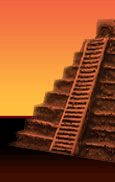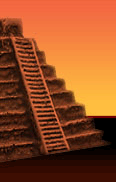GREETINGS, FEEL FREE
TO
"SHOP NAKED."©

We deal in items we believe others will enjoy and want to purchase.
We are not experts.
We welcome any comments, questions, or concerns.
WE ARE TARGETING A GLOBAL MARKET PLACE.
Thanks in advance for your patronage.
Please Be sure to add WDG&B to your favorites list!
NOW FOR YOUR VIEWING PLEASURE…
COPPER OVER BRASS SERVICEWARE
ARTIST ORIGINAL / AO
ONE OF A KIND / OOAK
BY ARTISAN "J.R.R." OF THE TAXCO AREA.
HECHO EN MEXICO
"COBRE Y LATON"
CIRCA 1920
INCLUDES:
A GREAT TRAY (UNSIGNED) - MEASURES 11.75" BY 1.25"
A TEA / COFFEE POT / URN - MEASURES 7.5" HIGH AND IS TAPPERED TO THE TOP. 2.5" TO 4". ELONGATED SPOUT IS DRAMATIC AT 6"
AND THE WOOD HANDLE IS 5.5"
CREAMER & SUGAR MEASURE ABOUT 4.75" BY 5"
(W/ONLY ONE LID)
A UNIQUE MEXO-AMERICAN PIECE
ART DECO ERA
SUPERB LOOK AND FEEL FOR YOUR HACIENDA OR RANCHERO.
SOME SURFACE WEAR AND AGE COLORATION THROUGHOUT. SOME CALL IT PATENA. MAY NEED A CLEANING TO THE NEW OWNERS LIKING.
----------------------------------------------
FYI
Copper is a chemical element with the symbol Cu (Latin: cuprum) and atomic number 29. It is a ductile metal, with very high thermal and electrical conductivity. Pure copper is rather soft and malleable, and a freshly exposed surface has a reddish-orange color. It is used as a thermal conductor, an electrical conductor, a building material, and a constituent of various metal alloys.
Copper metal and alloys have been used for thousands of years. In the Roman era, copper was principally mined on Cyprus, hence the origin of the name of the metal as Cyprium, "metal of Cyprus", later shortened to Cuprum.
There may be insufficient reserves to sustain current high rates of copper consumption. Some countries, such as Chile and the United States, still have sizeable reserves of the metal which are extracted through large open pit mines.
Copper compounds are commonly encountered as salts of Cu2+, which often impart blue or green colors to minerals such as turquoise and have been used historically widely as pigments. Copper metal architectural structures and statuary eventually corrode to acquire a characteristic green patina. Copper as both metal and pigmented salt, has a significant presence in decorative art.
Copper(II) ions (Cu2+) are soluble in water, where they function at low concentration as bacteriostatic substances, fungicides, and wood preservatives. In sufficient amounts, copper salts can be poisonous to higher organisms as well. However, despite universal toxicity at high concentrations, the Cu2+ ion at lower concentrations is an essential trace nutrient to all higher plant and animal life. In animals, including humans, it is found widely in tissues, with concentration in liver, muscle, and bone. It functions as a co-factor in various enzymes and in copper-based pigments.
Modern period
The Great Copper Mountain was a mine in Falun, Sweden, that operated for a millennium from the 10th century to 1992. It produced as much as two thirds of Europe's copper needs in the 17th century and helped fund many of Sweden's wars during that time. It was referred to as the nation's treasury; Sweden had a copper backed currency.
Throughout history, copper's use in art has extended far beyond currency. It was used by Renaissance sculptors, in pre-photographic technology known as the daguerreotype, and the Statue of Liberty. Copper plating and Copper sheathing for ships' hulls was widespread. The ships of Christopher Columbus were among the earliest to have this protection. The Norddeutsche Affinerie in Hamburg was the first modern electroplating plant starting its production in 1876. The German scientist Gottfried Osann invented powder metallurgy of copper in 1830 while determining the metal's atomic weight. Around then it was also discovered that the amount and type of alloying element (e.g. tin) would affect the tones of bells, leading to bell casting. Flash smelting was developed by Outokumpu in Finland and first applied at the Harjavalta plant in 1949. The energy-efficient process accounts for 50% of the world’s primary copper production.
Copper has been pivotal in the economic and sociological worlds, notably disputes involving copper mines. The 1906 Cananea Strike in Mexico dealt with issues of work organization. The Teniente copper mine (1904–1951) raised political issues about capitalism and class structure. Japan's largest copper mine, the Ashio mine, was the site of a riot in 1907. The Arizona miners' strike of 1938 dealt with American labor issues including the "right to strike".

(PICTURE FOR DISPLAY ONLY)
---------------------------
Thanks for choosing this sale. You may email for alternate payment arrangements. We combine shipping. Please pay promptly after the auction. The item will be shipped upon receipt of funds. WE ARE GOING GREEN, SO WE DO SOMETIMES USE CLEAN RECYCLED MATERIALS TO SHIP.
Please leave feedback when you have received the item and are satisfied. Please respond when you have received the item.
*****
5*'s
*****
If you were pleased with this transaction, please respond with all 5 stars! If you are not pleased, let us know via e-mail. Our goal is for 5-star service. We want you to be a satisfied, return customer.
Please express any concerns or questions. More pictures are available upon request. The winning bid will incur the cost of S/H INSURED FEDEX OR USPS. See rate calculator or email FOR ESTIMATE. International Bidders are Welcome but be mindful if your country is excluded from safe shipping.
Thanks for perusing THIS and ALL our auctions.
Please Check out our other items!
WE like the curious and odd.
BUY, BYE!!
i







